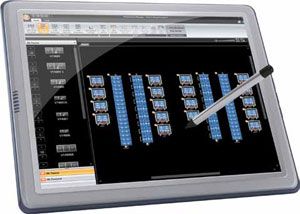With HiQnet Performance Manager, Harman Introduces ‘Modal Workflow’, a Simplified Path to System Success
Quick Bio

NAME: Adam Holladay
COMPANY: Harman
TITLE: Market Manager, System Development and Integration Group
OVERTIME: HiQnet Performance Manager software is based on the operator’s workflow so it can help out at every stage of the project.
Back in 2008, a small team from across Harman Professional, led by the core Harman System Development and Integration software team, spent many months focusing on user experience in audio system design software. We were in the fortunate position that the feature set of our core software application, HiQnet System Architect—then at version 1.8—was mature, and with version 2.0 looming, we decided to focus on the software user experience. The first result of this development process was to introduce the new user experience concepts in System Architect 2 in 2010. Since then, we have gone on to incorporate the fundamental building blocks of these new concepts into awardwinning sister software HiQnet Performance Manager, and it’s something you can bet we’ll continue to develop and expand in the future.

Our initial aim was simply to remove the clutter—the noise that so frequently plagues audio system software. Audio processing and routing hardware is incredibly capable today, and it’s almost as if the software to configure and control it is often an afterthought. “We need a new feature? Stick it in the tools menu.” (As in, “Stick it in the tools menu, along with all the others…”)
The goal was to make the important tools clearly visible, and hide away everything that was unnecessary. We wanted the user to be able to say to the software, “Right, I want to do this now,” and for the software to respond and say, “Sure, here are the tools you need to do that.” Software is able to access millions of processor cycles a second, so we as developers ought to be making the software work harder. Designing the interface so that it works on the user’s behalf means the all-too-traditional roles can be reversed. The operator can leave much of the heavy thinking to the CPU and the interface, allowing them to focus on their overall design goals.
Once we had that paradigm in place, we then laid out the tasks into ‘modes’. It made sense to sequence the modes in the order in which they would typically be used. And thus ‘modal workflow’ was born.
Next came the realization that if the software is based on the operator’s workflow, then it can help out at every stage of the way since considerable levels of intelligence can now be embedded into the interface. The software is designed to know your end goal before you’ve even started.
Initially employed as three or four modal workflow stages in System Architect 2, HiQnet Performance Manager takes the concept to the extreme, with 13 top-level workflow modes. Step one—Add Array Templates: the interface tailors itself perfectly for the task. Step 2—Add Speakers: once predictive modeling has been completed for each of the line arrays in the templates, speakers are added to the main workspace automatically. The same is then true for amplifiers which are automatically loaded to the design, understanding which loudspeakers and which bandpass inputs they will be powering, so that they are immediately ready and prepared with the appropriate speaker tunings.
Modal workflow has allowed us to rethink how many other laborious system design tasks are managed. We’ve simplified system-wide audio routing and networking through the use of drag-and-drop. Many system control interfaces in Performance Manager are pre-prepared and ready to go, straight out of the box—no time-consuming customization of system-specific control is required for each and every system. Everything is now at your fingertips when you need it.
Perhaps most importantly, we’ve only scratched the surface of what a workflow-based software application can do for user interaction with increasingly complex systems. Watch this space.
Adam Holladay is market manager of Harman’s System Development and Integration Group.











